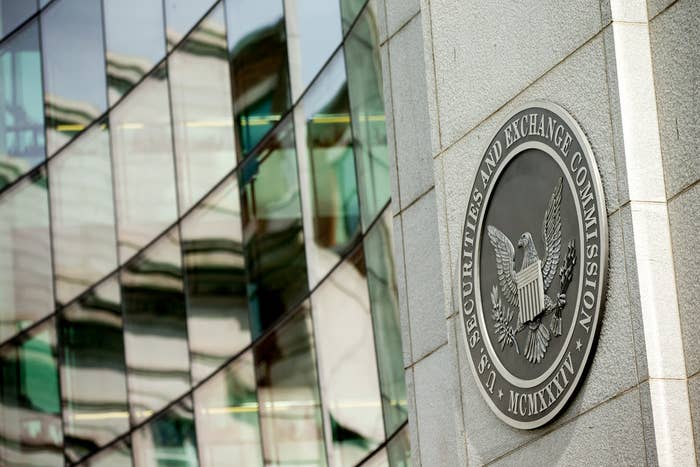
Publicly traded companies will be required to disclose their median pay for employees and the ratio of CEO pay to median worker pay, after the Securities and Exchange Commission approved new disclosure rules.
The rules are the latest in raft of mandates for public companies to make their executives pay practices more transparent. They're also a win for campaigners against income inequality, who have long pointed to massive disparities in pay between executives and workers — for example, the gap between the low hourly wages of a Wal-Mart associate and the $25.6 million 2014 pay package for the company's CEO, Doug McMillon.
"The hope, quite simply, is that this information will better equip shareholders to promote accountability for the executive compensation practices of the companies that they own," said SEC commissioner Luis Aguilar, a Democrat who voted for the new rules.
The SEC has also passed rules that mandate non-binding shareholder votes on executive compensation, known as "say-on-pay."
The rules allow companies to exclude some of their US-based employees from the calculation, use statistical sampling methods to determine median pay, make the median calculation once every three years, and exclude some non- US based employees.
The Economic Policy Institute, a left-leaning research group that receives some union funding, said last year that CEO pay at large companies had grown 997% from 1978 to 2014, to an average of $16.3 million at 350 large U.S. firms. The ratio between CEO pay and workers, EPI said, has grown from 30-to-1 in 1978 to 303-to-1 in 2014.
Like many new corporate rules implemented following the financial crisis, the SEC's latest disclosure requirements will likely come under legal challenge.
"We will continue to review the rule and explore our options for how best to clean up the mess it has created," said David Hirschmann, the CEO of the U.S Chamber of Commerce's Center for Capital Markets Competitiveness in a statement.
"Congress added this disclosure to Dodd-Frank as a favor to union lobbyists who misguidedly think it will help their organizing effort," Hirschmann said. "At best, pay ratio is a misleading, politically-inspired, and costly disclosure that fails to provide investors with useful, comparable data."
Conservatives and business groups have long opposed the rules, arguing that they don't provide useful information to investors, impose a costly reporting burden on companies, and may not be useful for comparisons between businesses.
Daniel Gallagher, an SEC commissioner who voted against the rule, said in a speech Tuesday that such rules were a "textbook example" of "social policy masquerading as disclosure requirements" and part of a "creeping and continuing federal intrusion into corporate governance."
But while there are plenty of opponents, the rules wil be a boon to researchers, journalists, and activists seeking to track changes in executive and worker pay.
Kurt Walters of Rootstrikers, an advocacy group that opposes corporate influence in politics, said in a statement: "After intense pressure, the SEC finally did the right thing and issued the CEO pay ratio rule mandated by Dodd Frank – a victory for investors, workers, and anyone concerned with making sure Wall Street plays by the rules."
